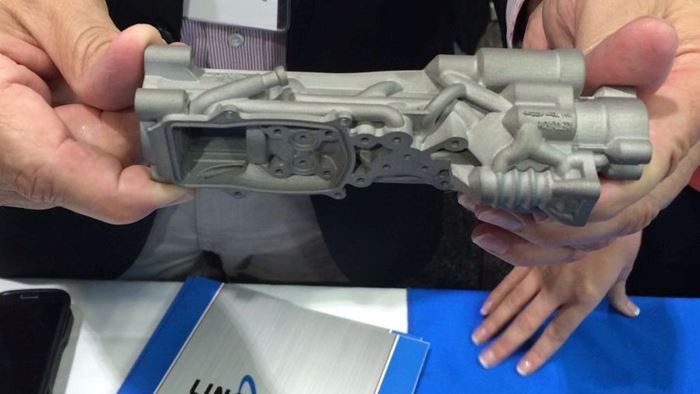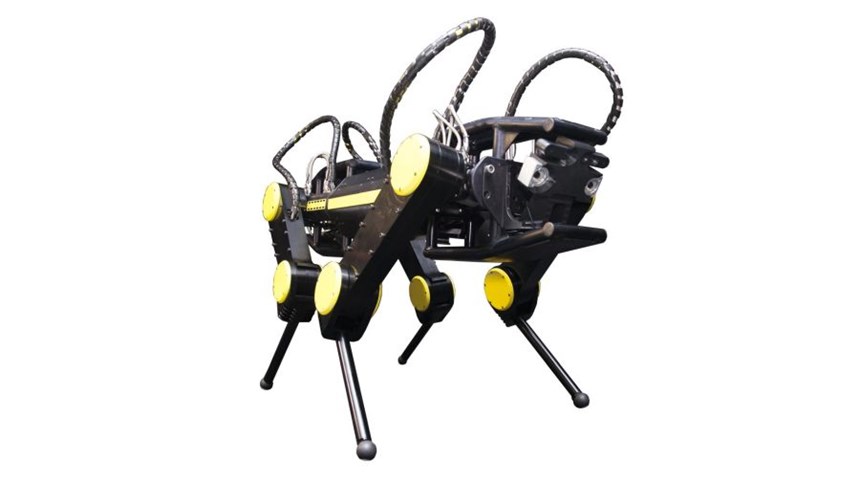SLM Achieves Weight Reduction for Robot Actuator
Selective laser melting made it possible to create a lighter, better performing actuator for a quadruped robot.
Share
Read Next
The specific challenge with this highly integrated electronic actuator for a hydraulic quadruped robot was meeting design requirements while achieving a 50 percent weight reduction, compared to a traditionally manufactured actuator body.
Selective laser melting (SLM) allowed it to be grown in Ti6Al4V (titanium alloy) as one piece, reducing manufacturing operations, improving performance through design features such as curved flow tubes that eliminate right-angle drilling, and reducing weight as a result of downsizing. Traditional manufacturing would have entailed combining the cast and fabricated pieces with brazing and welding operations.
This particular actuator is used on each leg of a quadruped robot developed at the Italian Institute of Technology in Genoa, which was designed initially for military applications. However, a similar actuator concept can also be used in many other applications, for example: heavy equipment such as tractors and large earth-moving equipment for weight and size reduction, military and commercial aircraft to control velocity and engine speed by adjusting levers and flaps, and injection molding applications for exact precision control.
The part was built on a Renishaw AM250 SLM industrial 3D printer at Moog’s Additive Manufacturing Center in 2015, now Linear AMS’ R&D arm for AM. Linear AMS has produced other similar AM parts, for example, shin and forearm components for Boston Dynamics (bought by, then recently sold by Google) and its robots. Moog became majority owner of the company now called Linear AMS through an acquisition late last here. Read about this purchase and Moog's view of the future of AM.
Related Content
-
Video: 5" Diameter Navy Artillery Rounds Made Through Robot Directed Energy Deposition (DED) Instead of Forging
Big Metal Additive conceives additive manufacturing production factory making hundreds of Navy projectile housings per day.
-
Combining Metal and Polymer for Better 3D Printed Tools
Applications prone to wear call for more durable tooling than 3D printed polymer alone, but full metal is not always necessary.
-
Chuck Jaws Achieve 77% Weight Reduction Through 3D Printing
Alpha Precision Group (APG) has developed an innovative workholding design for faster spindle speeds through sinter-based additive manufacturing.













